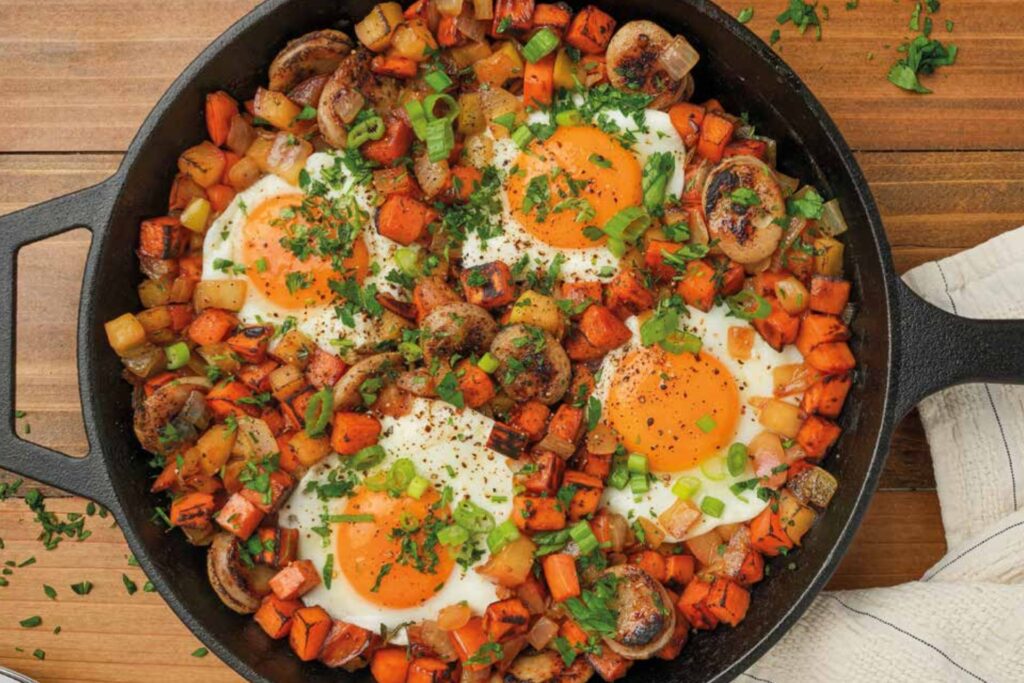“Stop eating or you’ll spoil your appetite.” How many times have you said this to your little ones? The fact is, while three daily meals may be sufficient for adults, it’s often not enough for growing bodies. Brandy McDevitt, Ottawa registered dietitian and founder of Tummy Thyme, says the right snack offered at the right time may be just what your child needs to meet their nutrition requirements and regulate mood and energy levels. “Snacks are important because they help refuel a child throughout the day,” she says. After all, running around in gym class or singing at the top of your lungs in the car ride to school takes up a lot of energy!

Debby Arts-Rodas, a pediatric registered dietitian at Toronto’s St. Joseph’s Health Centre, says most young children require three meals per day and one to two snacks depending on their energy output. “Kids who are really active may need to eat more snacks to meet their energy and nutrient needs,” she says. In addition, kids with small appetites may not be able to get all of their nutrients in three large meals and would rather graze throughout the day.
Follow these tips to provide your little ones with the best snack options any time of day:
1. Lunchbox Snacks
Portable is top of mind when it comes to lunch snacks. Granola bars are a common, convenient snack, but Brandy cautions to read the labels carefully, aiming for less than 10 grams of sugar per bar and three to five grams of fibre. Get kids involved in making up a fun trail mix that can be put into snack-size containers. Start with some vitamin D-fortified cereals such as multi-grain Cheerios. “Vitamin D is important for tissue development, bones and growth,” says Debby, yet it’s a nutrient we often lack in the winter when sun exposure is minimal. Add some pumpkin seeds for some omega-3s, cranberries or raisins for a sweet taste kids will love and even some dark chocolate chips for a hit of antioxidants.
2. Snacks with a One-Two Punch
To stave off hunger, Brandy recommends combining a source of protein or healthy fat such as peanut butter or Greek yogurt with a carbohydrate, such as fruit. “If you’re providing an apple, that will make the child feel hungry faster because the body will break down that simple carbohydrate quickly. In comparison, if you put some nut butter on the apple, that source of protein will help the body break down that carbohydrate a little slower and make them feel fuller for a longer time,” says Brandy. Other smart combos include pita and hummus, a whole grain muffin and a glass of milk, or nuts and dried fruit.
3. Snacks that Won't Spoil Dinner
Spacing out snacks and meal time by two hours is ideal, but busy parents know this is sometimes impossible. While chowing down half a box of crackers before dinnertime is sure to ruin kids’ appetite, Brandy says a few apple slices or orange wedges will tide hungry mouths over for a short period of time. “Any fruit or vegetable on its own is not going to give very much satiety value,” says Brandy.
4. Homework Snacks
Give your child a boost of brain power while they complete their homework. “The brain feeds on glucose,” says Debby. Healthy sources of glucose include milk, fruit and grains. Another well-known nutrient important for brain health is DHA (commonly known as omega-3 fatty acids). A 2013 study by researchers at the University of Oxford found low levels of omega-3s were associated with worse performance on reading tests and working memory and more symptoms of ADHD. Another study at the same university found that children with low literacy levels improved their reading scores after eating more omega-3s. Omega-3s are commonly found in cold water fish such as salmon and sardines. While these may not whet your little one’s appetite, try mixing some omega-3-rich flaxseeds in a fruit smoothie or giving them half a tuna sandwich on whole grain bread with omega-3 fortified orange juice at homework time to bring out their inner Einstein.
5. Liquid Snacks
Sippable treats are a great way to sneak two or three servings of fruit and fibre into your child’s diet. Use vanilla yogurt or 100 percent orange juice as your smoothie base, then experiment with different combinations of fresh or frozen fruits. Brandy recommends mixing up a large batch of smoothies and freezing them into individual portions so they become smoothie pops.
6. Bedtime Snacks
Although not all children will require a bedtime snack, those who are involved in sports in the evenings and are burning a lot of calories will benefit from a snack an hour or two before bedtime. Debby recommends protein-rich foods before bedtime as they contain tryptophan, an amino acid that produces serotonin and melatonin, two nutrients that are important in promoting sleep. Melatonin is also found in some grains such as corn, rice and oats and some fruits such as cherries. Some great bedtime snacks include:
- toasted whole grain pita triangles with tzatziki sauce
- oatmeal cooked in milk topped with berries
- a whole grain bagel toasted with melted cheese
- half a turkey sandwich with a glass of milk
Avoid caffeine-containing foods before bedtime such as soft drinks and chocolate that might interfere with sleep.
7. Party Snacks
Replace the chip bowl with a healthy alternative such as air-popped popcorn drizzled with melted butter or sprinkled with Parmesan cheese. Get kids involved in making fun and healthy snacks such as:
- fruit kabobs (chunks of fruit separated by pieces of cheese on a kid-sized skewer)
- ants on a log (celery sticks filled with peanut butter and topped with raisins).
For an allergy-free party, substitute peanut butter with sunflower or pumpkin seed butter.
8. Travel Snacks
Avoid the dubious snacks at the highway truck stop and high-priced airlines by planning ahead and packing your own healthy travel snacks. Berries and grapes are naturally snack-sized, making them a perfect on-the-go travel snack. Dried apricots, cranberries or raisins are also a great option. Avoid fruits with pits such as cherries and apricots so you don’t have to worry about waste. Make your own breakfast bars in mini muffin cups for perfect two-bite snacks. Raw, pre-cut vegetables such as carrots or celery are also great finger-friendly snacks and you can add hummus for a punch of protein to keep hunger at bay and energy levels high, evading the dreaded cry “are we there yet?”
Lisa Evans is a frequent contributor to ParentsCanada, and an experienced snacker.
Originally published in ParentsCanada magazine, November 2013.










